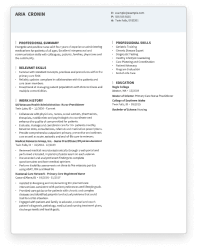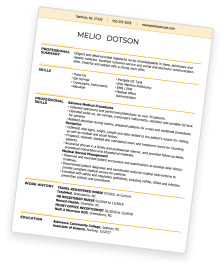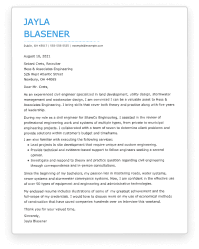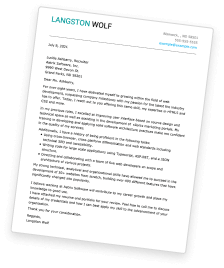Phlebotomist Resumes: Overview
Your work as a phlebotomist is crucial in the field of healthcare. You’re responsible for drawing blood from patients and blood donors, properly labeling and storing specimens, and communicating with patients and donors to reduce anxiety about having their blood drawn.
Phlebotomists can work in several healthcare environments, including:
- Hospitals and Clinics
- Diagnostic Laboratories
- Blood Donation Centers
- Physicians’ Offices
- Research Institutions
As a phlebotomist, you’re the first point of contact for many patients. In addition to your blood-drawing know-how, you will need skills like communication, empathy, and attention to detail in order to succeed in phlebotomy.
Hloom can help you build your resume to help you get the job you want!
Explore our resume examples and downloadable templates, and get expert tips to impress recruiters and hiring managers today!
Phlebotomist Example Resume
Take a look at this first example of a phlebotomist resume. It uses a chronological format to emphasize the candidate’s years of experience and a layout that is visually appealing and easy to read. Here’s what makes it stand out:
Clean Design and Layout:
The resume features a meticulously organized layout, striking a perfect balance between whitespace and text. This visually appealing formatting enhances readability and draws attention to the candidate’s experience in phlebotomy.
Dynamic Action Verbs:
Leveraging powerful action verbs paints a vivid picture of the candidate’s achievements. For example, starting sentences with words like performed, created, and maintained injects energy and impact into each entry in the work history section.
Compelling Professional Summary:
This example of an experienced phlebotomist’s resume features a persuasive professional summary. The well-written summary statement is a captivating introduction, briefly describing the candidate’s experience and strengths and setting a positive tone for the rest of the resume.
Detailed Skills Section:
Besides the well-written work history, the candidate uses the skills section to convey their qualifications for the job. Using two columns allows plenty of room to list the relevant skills employers will be looking for.
Senior Phlebotomist Resume Example
Now, let’s look at this second example of a phlebotomist resume. This resume template uses a combination format and colorful design to showcase the candidate’s skills and experience. Here’s what we like about it:
Adaptable Combination Format:
This resume adopts a versatile combination format, skillfully emphasizing experience and skills in a balanced way. This format is perfect for less experienced phlebotomists or someone transferring from another field.
Bold Use of Color:
This resume template features a bold use of color that will catch the eye of hiring managers. The bright red color is a fitting choice for someone working in phlebotomy, and the design naturally emphasizes the candidate’s impressive skills.
Emphasis on Relevant Skills:
A dedicated skills section showcases the candidate’s most relevant skills. The phlebotomist demonstrates their ability to do the job by list skills such as sample and specimen collection, specimen labeling, and patient counseling.
Showcasing Education and Training:
In this phlebotomist resume example, the education section is in a prominent location to highlight the candidate’s degrees in nursing and clinical laboratory sciences. The candidate also lists their CPR certification at the top of their skills section, demonstrating their commitment to professional excellence.
How to Write a Phlebotomist Resume
When you apply for your next phlebotomy job, you need a resume that reflects your unique skills and qualifications in the best light. The first step is to write your resume outline and then use it to create a resume that stands out from the rest.
Follow these steps to craft an outstanding resume. Need more guidance? We’ve got you covered. Check out our comprehensive guide to writing a resume!
Pick a Format
First, choose a resume format that shines the best light on your level of phlebotomy experience—whether chronological, functional, or a combination.
If you are a seasoned phlebotomist with several years of experience, a chronological format is perfect for showcasing your work experience. It is also the most common format for resumes, so it is ATS-friendly and familiar to hiring managers.
However, if you are just beginning your career in phlebotomy, you may prefer a functional format for your resume. Functional resumes emphasize your professional skills and qualifications instead of focusing on your work history.
Or, you can choose to mix elements from both chronological and functional formats to create a balanced view of your skills and experience by using a combination format. A combination format is an excellent choice if you are transitioning from another field or only have a few years of experience.
Contact Information
No matter which format you choose, it should be no surprise that you will include your contact information on your resume.
Place your full name, phone number, and email address at the top of your resume where potential employers can find it easily.
Don’t forget to check for typos; you don’t want to miss a call back for an interview!
Resume Summary or Objective
Next, craft a concise summary or objective statement that highlights your phlebotomy skills and commitment to patient care. Make it a snapshot of what makes you a standout phlebotomist.
In 2-3 brief sentences, explain your experience, unique traits, and most relevant skills to introduce yourself and make the hiring manager want to keep reading.
Choose a professional summary if you have relevant work experience to discuss in addition to your skills.
If you are new to the career, an objective statement is a better choice for you to convey your career goals, skills, and passion for the job.
Work History
Now, detail your relevant work experience, emphasizing key achievements, successful blood draws, and any specialized areas of phlebotomy.
Your work history should be in reverse chronological order, beginning with your most recent employer and working backward.
Each job entry should include:
- Job title
- Name of employer
- Location
- Dates of employment
Then, under each entry, use bullet points to list your most relevant job duties and accomplishments in that role.
Use strong action verbs, and quantify your achievements with numbers or percentages to demonstrate your impact as a phlebotomist.
For example,
“Counseled anxious patients to lie down for blood draws, resulting in an 80% reduced risk of fainting or injury.”
Or,
“Increased the blood donation center’s stick-per-hour rate by 5 donors per hour, reducing wait time and increasing inventory.”
Each bullet point should be relevant to the job you are applying for and should focus on promoting your best skills, qualifications, and professional accomplishments.
Skills
Next, create a separate section to list your skills. Include hard skills like venipuncture and specimen collection and soft skills like empathy, communication, and attention to detail.
Tailor this section to the job posting by including skills mentioned in the job requirements to show you are a perfect fit for the job and to help your resume pass initial screenings by applicant tracking systems (ATS).
Education
Include your educational background, detailing degrees you earned and the names of the schools you attended. It is only necessary to include dates if your graduation date is in the future.
Additional Sections
If space allows, consider adding sections that strengthen your phlebotomist resume and make you stand out as a potential employee. You can include sections highlighting your certifications, professional memberships, volunteer work, or relevant coursework.
When adding these optional sections, focus on information relevant to the job that makes your unique skills and experience shine!
Key Skills For Phlebotomist Resumes
Including the right skills on your resume will help you land an interview. As a phlebotomist, you need hard skills like venipuncture and biohazard safety and soft skills like time management and organization.
Although you will want to tailor your skills section to reflect your unique experience, we’ve put together the top five hard and soft skills for phlebotomy resumes to get you started!
Want more ideas and advice? Explore our hard skills, soft skills, technical skills, and computer skills pages for a deeper dive.
Top 5 Hard Skills for Phlebotomist Resumes
- Venipuncture: Proficiency in drawing blood using various techniques, ensuring minimal discomfort to the patient.
- Specimen Collection: Skill in collecting, labeling, and transporting blood specimens while maintaining sample integrity.
- Infection Control: Knowledge of and adherence to infection control protocols to prevent the spread of diseases.
- Order of Draw: Understanding the correct order of draw to avoid sample contamination and ensure accurate test results.
- Patient Communication: Effective communication with patients alleviates anxiety and provides clear blood draw instructions.
Top 5 Soft Skills for Phlebotomist Resumes
- Empathy: Compassion and empathy when dealing with patients, especially those who may be nervous about blood draws.
- Attention to Detail: Thoroughly verifying patient information, labeling specimens, and maintaining accurate records.
- Interpersonal Skills: Building rapport with patients to create a positive and comfortable healthcare experience.
- Time Management: Efficiently managing time to meet the demands of a busy healthcare setting.
- Adaptability: Flexibility to handle unexpected situations and adapt to changes in workflow.
Top Certifications for Phlebotomist
Many phlebotomy jobs will require certifications or licensing, depending on the location.
However, even when not required, you can boost your credibility as a phlebotomist by obtaining professional certifications.
Stand out as a candidate committed to excellence with these top certifications for phlebotomists:
- Certified Phlebotomy Technician (CPT): Offered by the National Healthcareer Association (NHA), this certification validates your competence in phlebotomy.
- Registered Phlebotomy Technician (RPT): Granted by the American Medical Technologists (AMT), this certification validates your expertise in phlebotomy procedures.
- Pediatric Phlebotomy Certification: Specialized certification for professionals handling blood draws from pediatric patients, showcasing additional expertise.
- Healthcare Provider CPR Certification: While not specific to phlebotomy, a current CPR certification is often required for healthcare positions, adding an extra layer of qualification.
7 Tips For Writing A Phlebotomist Resume
Highlight a Patient-Centric Approach: To stand out from the competition, emphasize your commitment to patient care and your ability to make the blood draw experience as comfortable as possible. Patients and donors can experience a great deal of anxiety when having their blood drawn, so remember to mention your empathy for patients, techniques for preventing fainting and commitment to providing a positive experience.
Quantify Achievements: Using numbers and percentages will make your resume more engaging and help potential employers understand the impact you have had in previous jobs. Showcase the number of successful blood draws, types of specimens collected, and any specific challenges overcome in your work history.
Detail Specialized Training: If you have training in areas like pediatric or geriatric phlebotomy, highlight it to stand out as a versatile professional. Consider creating an additional section of your resume to detail specific training, workshops, certifications or coursework that makes you a great candidate.
Use Keywords from the Job Description: Incorporate relevant industry keywords and words from the job description. For example, including words like venipuncture, specimen collection, capillary techniques and infection control will help your resume pass through applicant tracking systems (ATS) and get to the hiring manager.
Emphasize Multitasking Skills: Phlebotomists often work in fast-paced environments. Highlight your ability to multitask effectively and manage a high volume of blood draws.
Mention Equipment Proficiency: Specify any phlebotomy equipment and technologies you are proficient in to demonstrate your technical expertise. For example, in your work history or skills section, you can mention your experience using butterfly needles, lancets, and blood collection tubes.
Proofread Thoroughly: Attention to detail is critical for a phlebotomist. Even a small typo can make a poor first impression, so proofread your resume carefully. Consider seeking feedback from colleagues or mentors to get feedback and check for any mistakes.
Helping Job Seekers Like You


Save Time With Hloom's Resume Builder
Key Takeaways
- Craft a resume emphasizing your patient-centric approach, showcasing your ability to provide a positive and reassuring blood draw experience.
- Highlight your versatility by detailing specialized training in pediatric or geriatric phlebotomy, making you a well-rounded candidate.
- Quantify your achievements, such as the number of successful blood draws and types of specimens collected, to provide tangible evidence of your expertise.
- Demonstrate your commitment to professional development by including details about ongoing education and training.
- Optimize your resume with industry-specific keywords to increase visibility in applicant tracking systems (ATS).
Save Time With Hloom's Cover Letter Builder












